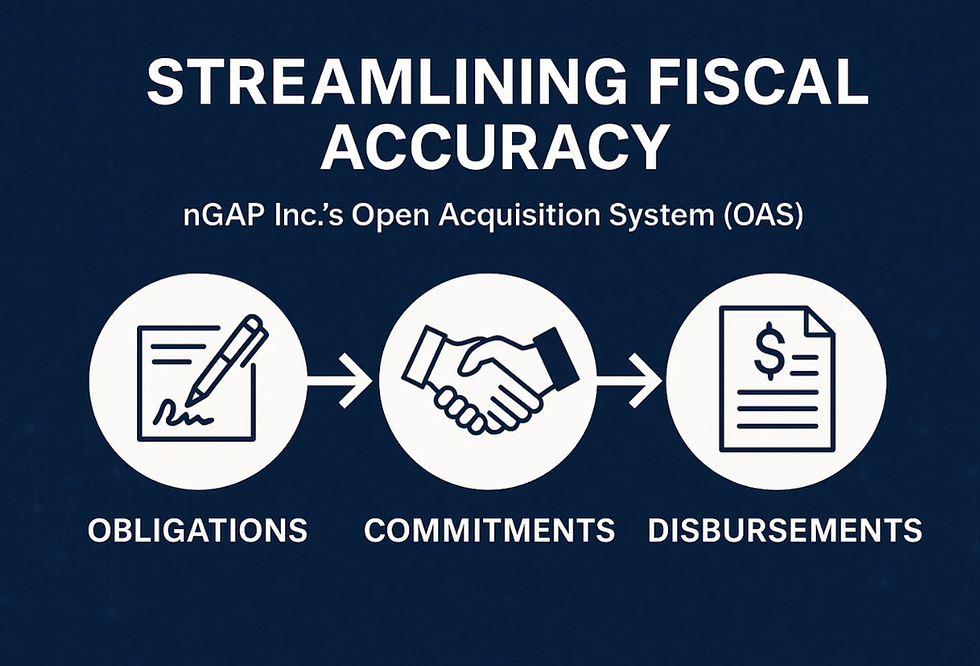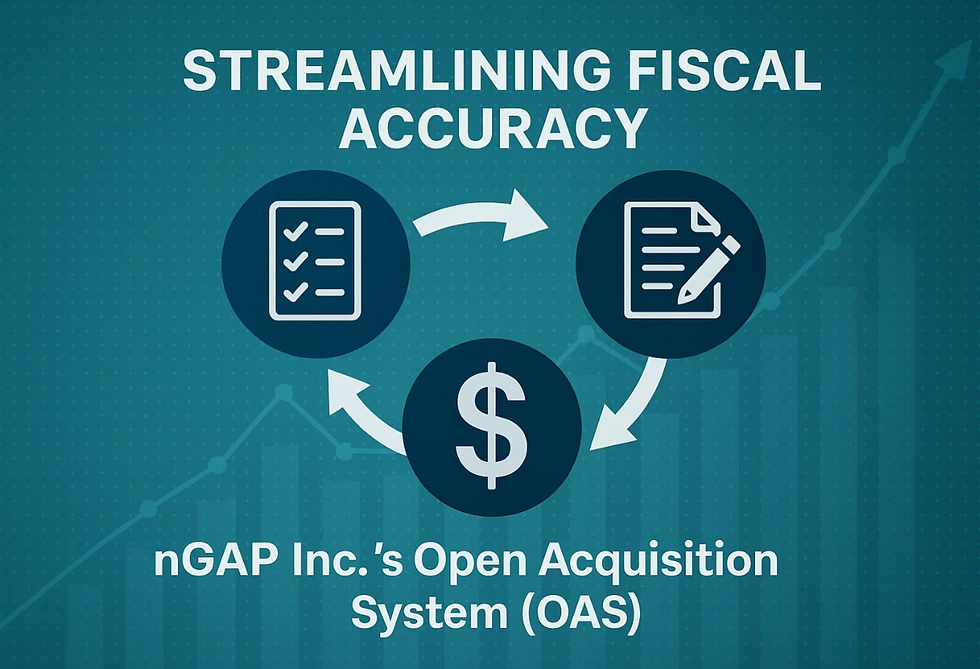Streamlining Fiscal Accuracy
- nGAP Inc
- Sep 29
- 2 min read

nGAP Inc.’s Open Acquisition System (OAS) provides a transformative approach to federal financial management by creating a direct, auditable link between obligations, commitments, and disbursements. This linkage is not just an operational convenience, it fundamentally reshapes how agencies manage fiscal responsibility, compliance, and real-time decision-making.
Preventing Over-Obligation
Traditional systems often treat commitments and obligations as separate layers, which can create blind spots and allow unintentional over-obligation. OAS eliminates this risk by integrating these elements into a single, traceable financial chain. Each obligation is tied back to a commitment, and every disbursement is validated against available obligated funds. This ensures leaders cannot obligate funds beyond what has been committed, effectively closing the gap between intent and execution.

Reducing Lapsed Funds
Lapsed funds are a common problem in government financial management, often stemming from a lack of visibility into the lifecycle of funds. OAS reduces this issue by synchronizing commitments, obligations, and disbursements in real time, giving program managers a live view of available balances and upcoming expirations. This precision allows agencies to proactively adjust spending patterns, reallocating funds before they expire and maximizing program outcomes.

Delivering Real-Time Financial Accuracy
Perhaps the most impactful capability of OAS lies in its real-time accuracy. Unlike legacy systems that rely on after-the-fact reconciliations, OAS continuously updates financial data as obligations and disbursements occur. This empowers leaders with instantaneous, trustworthy financial intelligence—a critical advantage when making resource allocation decisions under tight timelines. The result is not only improved compliance but also heightened agility in aligning financial resources with mission priorities.
In essence, OAS functions as a closed-loop financial control system. By tightly linking commitments, obligations, and disbursements, it enforces fiscal discipline, prevents waste, and equips leaders with the clarity they need to optimize limited resources. It is more than just a financial tool—it is an operational safeguard that drives accountability and efficiency across the enterprise.